Ostoskorissa ei ole tuotteita.
- Tuotteet
- |
- Erikoisveitset
- |
- Työkalut ja veitset
- |
- Varusteet
- |
- KA-BAR Taisteluveitsi Combat Knife Nahkakotelolla
Kuvaus
KA-BAR Taisteluveitsi Combat Knife Nahkakotelolla, erinomainen kopio, repro- eli uusiotuotantoversio alkuperäisestä veitsimallista, klassikko taistelupuukko, taisteluveitsien kuningas, ruskea puukahva, ruskea nahkatuppi, Combat Knife, valmistaja Fostex.
KA-BAR Taisteluveitsi Combat Knife Nahkakotelolla
Taisteluveitsien tunnetuimpia kantamuotoja on todennäköisesti amerikkalaisen Union Cutleryn alkujaan 1920-luvulla päivänvalon nähnyt KA-BAR. Taisteluveitsi on jättänyt jälkensä taistelukentille toisen maailmansodan, Korean sodan, Vietnamin sodan ja Lähi-idän amerikkalaisissa sodissa. Erityisesti Yhdysvaltojen erikoisjoukkojen alkujaan suosima KA-BAR on perushyvä metsästysveitsimallinen työkalu, joka sopii verihommien lisäksi myös vuolemiseen, nikkarointiin ja purkkien avaamiseen.
Ka-Bar materiaali
Taisteluveitsi on valmistettu ruostumattomasta teräksestä. Veitsen kahva öljyttyä puuta. Terä on upotettu koko veitsen mitalta, joten se kestää huomattavasti paremmin, kuin halvat sormisuojan kohdalta kiinnitetyt versiot.
Mitat ja paino
Taisteluveitsi terä on 17,6 cm ja 4 mm paksu. Kahvan osuus 12,2 cm pitkä. Veitsen kokonaismitta näppisuojan kanssa onkin sitten 30,8 cm. Metsästyspuukko tuppi on valmistettu 100% lehmännahasta.
KA-BAR – lyhyt historia
Alunperin KA-BAR Taisteluveitsi Ruskea Kahva ja Nahkakotelo tuotti Union Cutlery Co. New Yorkin osavaltiossa 1923 lähtien. Samainen firma alkoi käyttämään metsästysveitsistään nimeä KA-BAR, kun eräs metsästäjä lähetti tehtaalle kirjeen, jonka mukaan veitsi oli pelastanut tämän hengen, kun haavoittunut harmaakarhu oli hyökännyt tämän kimppuunsa ja kivääri oli jumittunut. Huonon kirjoitusasun vuoksi tekstistä sai aluksi selvää vain tavut “ka” ja “bar”, jonka myöhemmin ymmärrettiin tarkoittavan “kill a bear” eli karhun tappamista.
Tai kuten englanniksi kuuluu:
Origins
The owner of the KA-BAR Combat Knife trademark is the Union Cutlery Co. of Olean, New York. They began using the name on its knives and in its advertising in 1923, after receiving a testimonial letter from a fur trapper. The man claimed he used the knife to kill a wounded bear that attacked him after his rifle jammed. According to company records, the letter was only partially legible; “ka bar” could be read. They saw it as fragments of the phrase “kill a bear”. In 1923, the company adopted the name Ka-Bar from the “bear story” as their trademark. Beginning in 1923, the KA-BAR trademark was used as a ricasso stamp by Union Cutlery Co. It is still in use in its line of switchblade pocket knives. This includes the KA-BAR Grizzly, KA-BAR Baby Grizzly, and KA-BAR Model 6110 Lever Release knives.
To war
Ka-Bar Taisteluveitsi – In the absence of suitable officially issued knives, a number of Marines deploying for combat in 1942 obtained their personal knives through private purchase. The designs were usually hunting/utility patterns such as Western States Cutlery Co.’s pre-war L76 and L77 pattern knives, both of which had 7-inch (180 mm) Bowie type clip blades and leather handles. The Western States L77 was stocked at the San Diego Base Exchange at the onset of the war, and knives of this pattern were carried by many Marines. They were extremely popular in the 1st Marine Division as well as the Marine Raiders in the 2nd Marine Raider Battalion commanded by Lt. Col. Evans F. Carlson.
2nd World War
Working with Union Cutlery, USMC Colonel John M. Davis and Major Howard E. America contributed several important changes. Revisions were made, including a longer, stronger blade, the introduction of a small fuller to lighten the blade, a peened pommel (later replaced by a pinned pommel), a straight (later, slightly curved) steel crossguard, and a stacked leather handle for better grip. The design was given the designation of “1219C2” (although commonly known as the Ka-Bar Combat Knife). Notably, the Ka-Bar Combat Knife used a thicker blade stock than that of the USN Mark 1 utility knife, and featured a stout clip point. After extensive trials, the Ka-Bar prototype was recommended for adoption.The Marines’ Quartermaster at the time initially refused to order the knives, but his decision was overruled by the Commandant. The Marine Corps adopted the Ka-Bar on November 23, 1942.
Lähde: Wikipedia
– Amerikkalainen taisteluveitsi malli
– Laadukasta uusiotuotantoa
– Läpikahvan terä
– Mukana nahkakotelo
– Veitsi puukahvalla
Kirjoita ensimmäinen arvio tuotteelle “KA-BAR Taisteluveitsi Combat Knife Nahkakotelolla” Peruuta vastaus
KA-BAR Taisteluveitsi Combat Knife Nahkakotelolla
Merkki: Fostex
Vain 2 varastossa
56,00 €
Vain 2 varastossa
KA-BAR Taisteluveitsi Combat Knife Nahkakotelolla, erinomainen kopio, repro- eli uusiotuotantoversio alkuperäisestä veitsimallista, klassikko taistelupuukko, taisteluveitsien kuningas, ruskea puukahva, ruskea nahkatuppi, valmistaja Fostex
Legendaarisen KA-BARin astetta laadukkaampi reproversio!
Kuvaus
KA-BAR Taisteluveitsi Combat Knife Nahkakotelolla, erinomainen kopio, repro- eli uusiotuotantoversio alkuperäisestä veitsimallista, klassikko taistelupuukko, taisteluveitsien kuningas, ruskea puukahva, ruskea nahkatuppi, Combat Knife, valmistaja Fostex.
KA-BAR Taisteluveitsi Combat Knife Nahkakotelolla
Taisteluveitsien tunnetuimpia kantamuotoja on todennäköisesti amerikkalaisen Union Cutleryn alkujaan 1920-luvulla päivänvalon nähnyt KA-BAR. Taisteluveitsi on jättänyt jälkensä taistelukentille toisen maailmansodan, Korean sodan, Vietnamin sodan ja Lähi-idän amerikkalaisissa sodissa. Erityisesti Yhdysvaltojen erikoisjoukkojen alkujaan suosima KA-BAR on perushyvä metsästysveitsimallinen työkalu, joka sopii verihommien lisäksi myös vuolemiseen, nikkarointiin ja purkkien avaamiseen.
Ka-Bar materiaali
Taisteluveitsi on valmistettu ruostumattomasta teräksestä. Veitsen kahva öljyttyä puuta. Terä on upotettu koko veitsen mitalta, joten se kestää huomattavasti paremmin, kuin halvat sormisuojan kohdalta kiinnitetyt versiot.
Mitat ja paino
Taisteluveitsi terä on 17,6 cm ja 4 mm paksu. Kahvan osuus 12,2 cm pitkä. Veitsen kokonaismitta näppisuojan kanssa onkin sitten 30,8 cm. Metsästyspuukko tuppi on valmistettu 100% lehmännahasta.
KA-BAR – lyhyt historia
Alunperin KA-BAR Taisteluveitsi Ruskea Kahva ja Nahkakotelo tuotti Union Cutlery Co. New Yorkin osavaltiossa 1923 lähtien. Samainen firma alkoi käyttämään metsästysveitsistään nimeä KA-BAR, kun eräs metsästäjä lähetti tehtaalle kirjeen, jonka mukaan veitsi oli pelastanut tämän hengen, kun haavoittunut harmaakarhu oli hyökännyt tämän kimppuunsa ja kivääri oli jumittunut. Huonon kirjoitusasun vuoksi tekstistä sai aluksi selvää vain tavut “ka” ja “bar”, jonka myöhemmin ymmärrettiin tarkoittavan “kill a bear” eli karhun tappamista.
Tai kuten englanniksi kuuluu:
Origins
The owner of the KA-BAR Combat Knife trademark is the Union Cutlery Co. of Olean, New York. They began using the name on its knives and in its advertising in 1923, after receiving a testimonial letter from a fur trapper. The man claimed he used the knife to kill a wounded bear that attacked him after his rifle jammed. According to company records, the letter was only partially legible; “ka bar” could be read. They saw it as fragments of the phrase “kill a bear”. In 1923, the company adopted the name Ka-Bar from the “bear story” as their trademark. Beginning in 1923, the KA-BAR trademark was used as a ricasso stamp by Union Cutlery Co. It is still in use in its line of switchblade pocket knives. This includes the KA-BAR Grizzly, KA-BAR Baby Grizzly, and KA-BAR Model 6110 Lever Release knives.
To war
Ka-Bar Taisteluveitsi – In the absence of suitable officially issued knives, a number of Marines deploying for combat in 1942 obtained their personal knives through private purchase. The designs were usually hunting/utility patterns such as Western States Cutlery Co.’s pre-war L76 and L77 pattern knives, both of which had 7-inch (180 mm) Bowie type clip blades and leather handles. The Western States L77 was stocked at the San Diego Base Exchange at the onset of the war, and knives of this pattern were carried by many Marines. They were extremely popular in the 1st Marine Division as well as the Marine Raiders in the 2nd Marine Raider Battalion commanded by Lt. Col. Evans F. Carlson.
2nd World War
Working with Union Cutlery, USMC Colonel John M. Davis and Major Howard E. America contributed several important changes. Revisions were made, including a longer, stronger blade, the introduction of a small fuller to lighten the blade, a peened pommel (later replaced by a pinned pommel), a straight (later, slightly curved) steel crossguard, and a stacked leather handle for better grip. The design was given the designation of “1219C2” (although commonly known as the Ka-Bar Combat Knife). Notably, the Ka-Bar Combat Knife used a thicker blade stock than that of the USN Mark 1 utility knife, and featured a stout clip point. After extensive trials, the Ka-Bar prototype was recommended for adoption.The Marines’ Quartermaster at the time initially refused to order the knives, but his decision was overruled by the Commandant. The Marine Corps adopted the Ka-Bar on November 23, 1942.
Lähde: Wikipedia
– Amerikkalainen taisteluveitsi malli
– Laadukasta uusiotuotantoa
– Läpikahvan terä
– Mukana nahkakotelo
– Veitsi puukahvalla
Arviot
Tuotearvioita ei vielä ole.
Kirjoita ensimmäinen arvio tuotteelle “KA-BAR Taisteluveitsi Combat Knife Nahkakotelolla” Peruuta vastaus
Saatat myös pitää...
-
Ale!
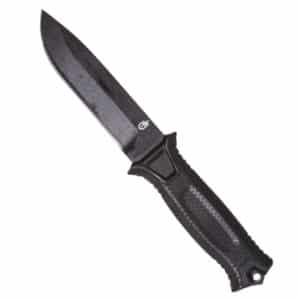
Gerber StrongArm Sileäterä Taktinen Taisteluveitsi
148,00 €Alkuperäinen hinta oli: 148,00 €.124,00 €Nykyinen hinta on: 124,00 €. Lisää ostoskoriin -
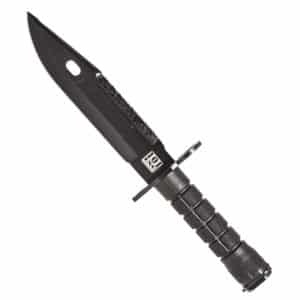
M9 Bayonet Pistin Taisteluveitsi Musta
59,60 € Lue lisää -
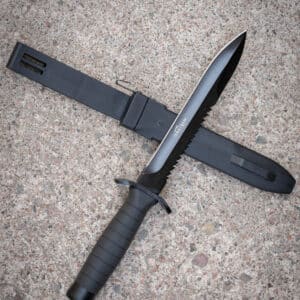
Glock M78 Taisteluveitsi Musta
39,80 € Lue lisää -
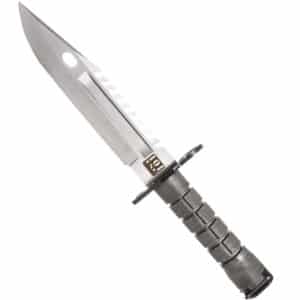
D80 Combat Survival Knife Selviytymisveitsi Vihreä
58,00 € Lue lisää
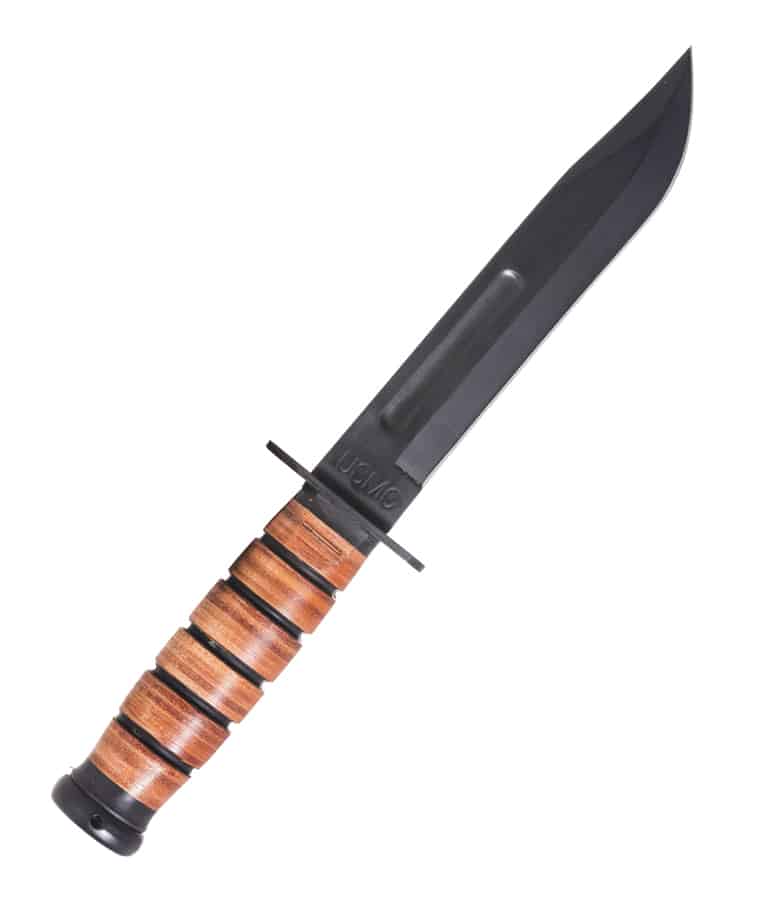

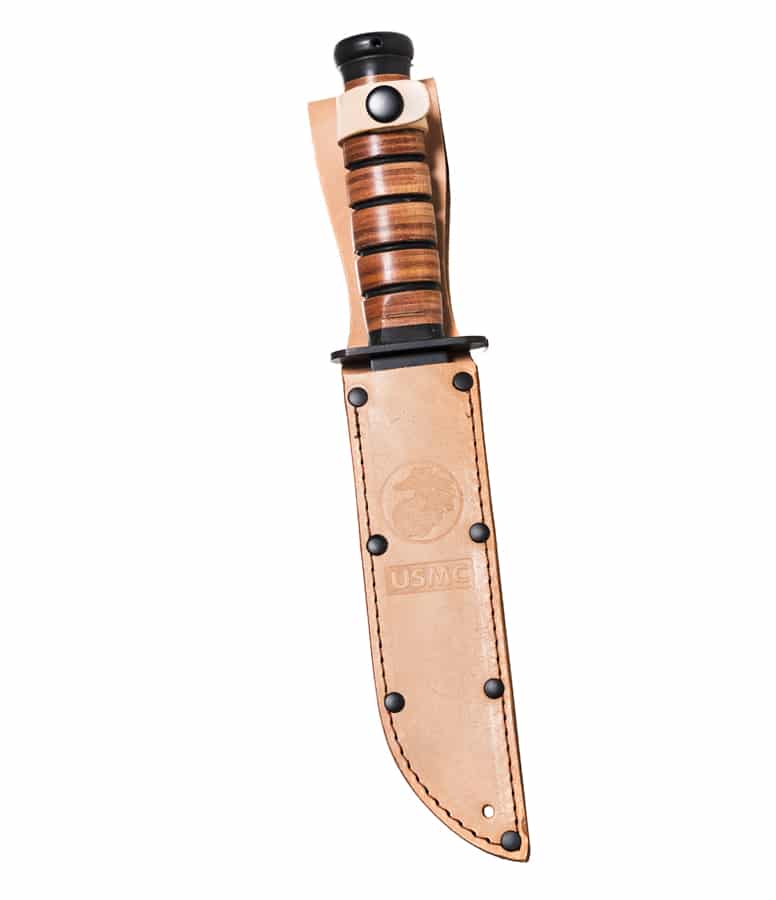
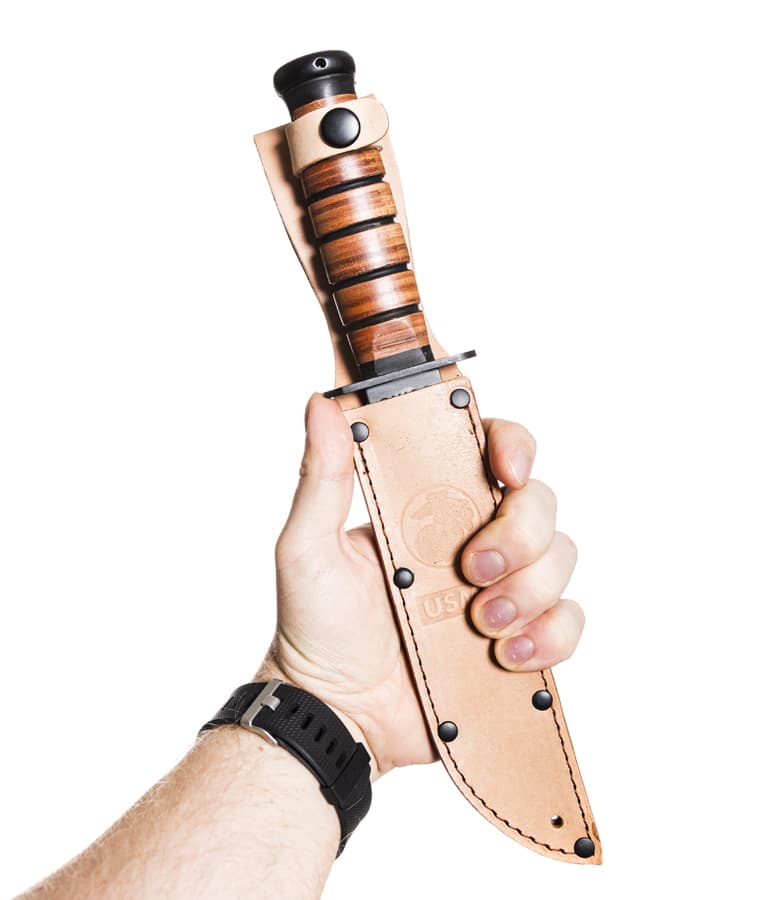
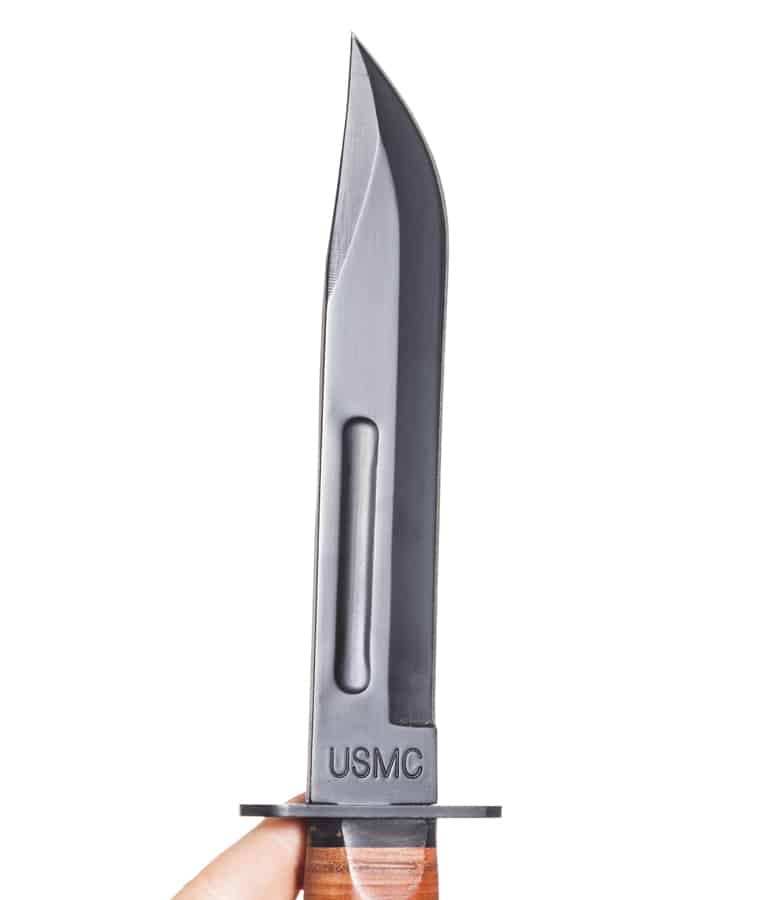
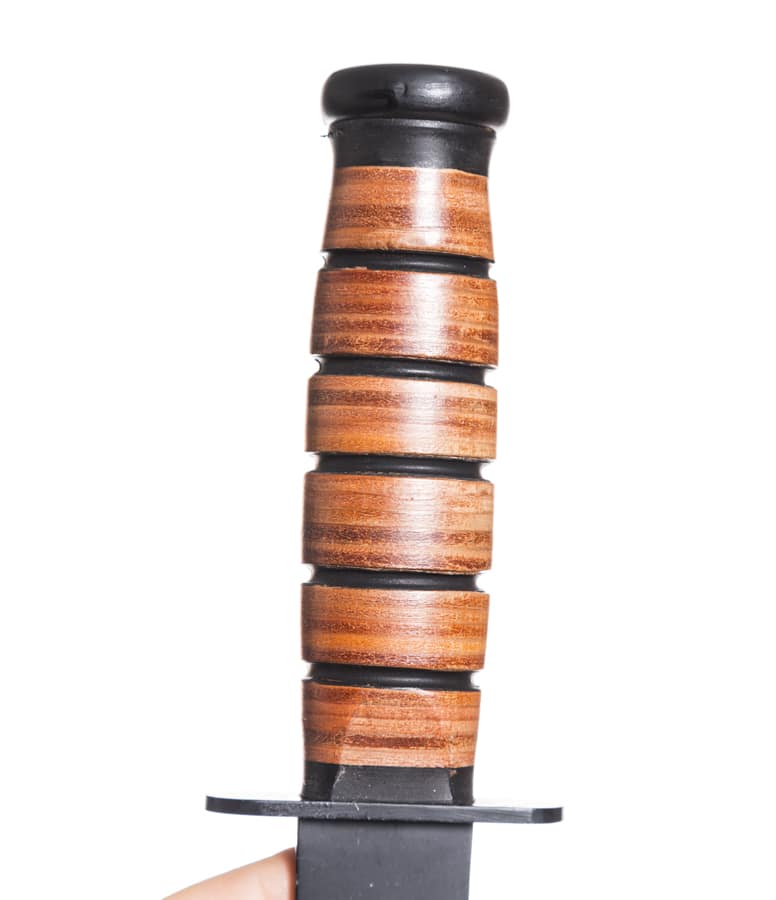
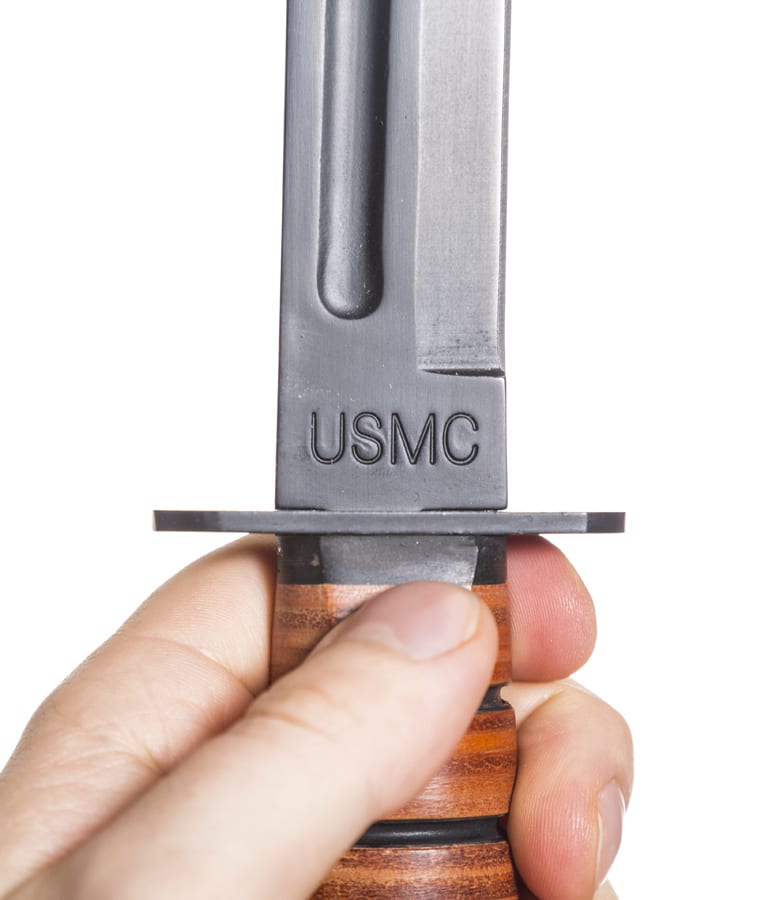
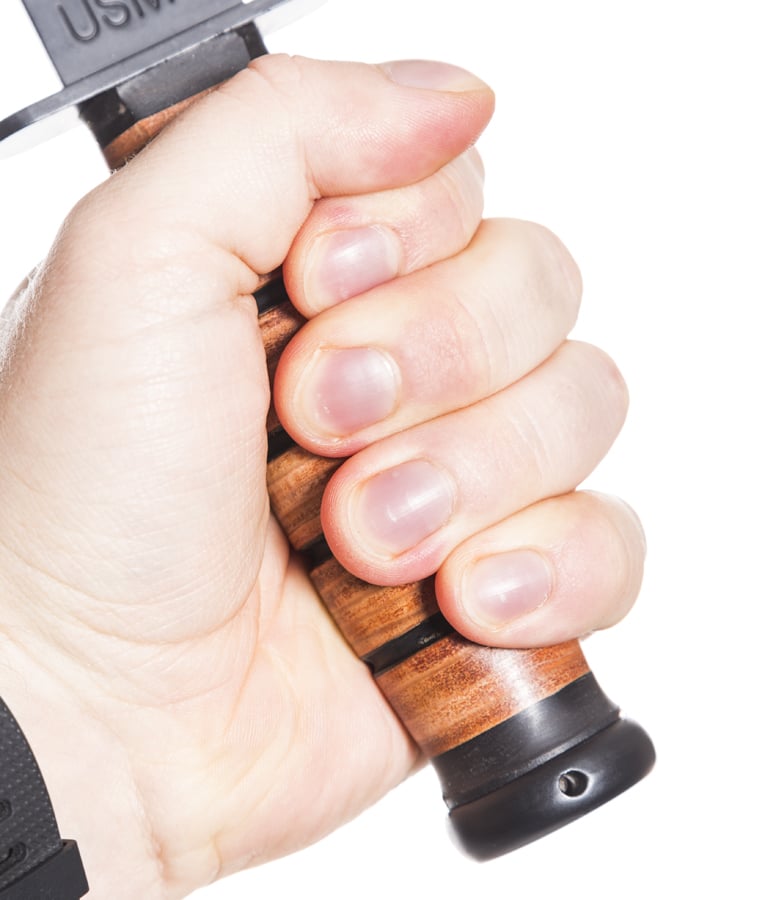
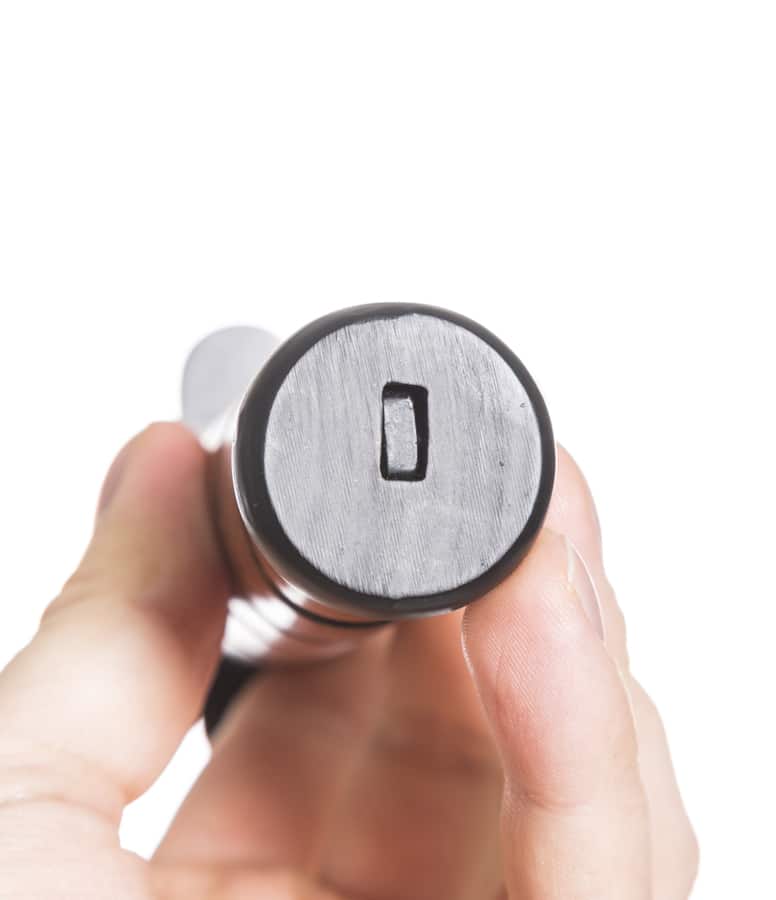
Arviot
Tuotearvioita ei vielä ole.